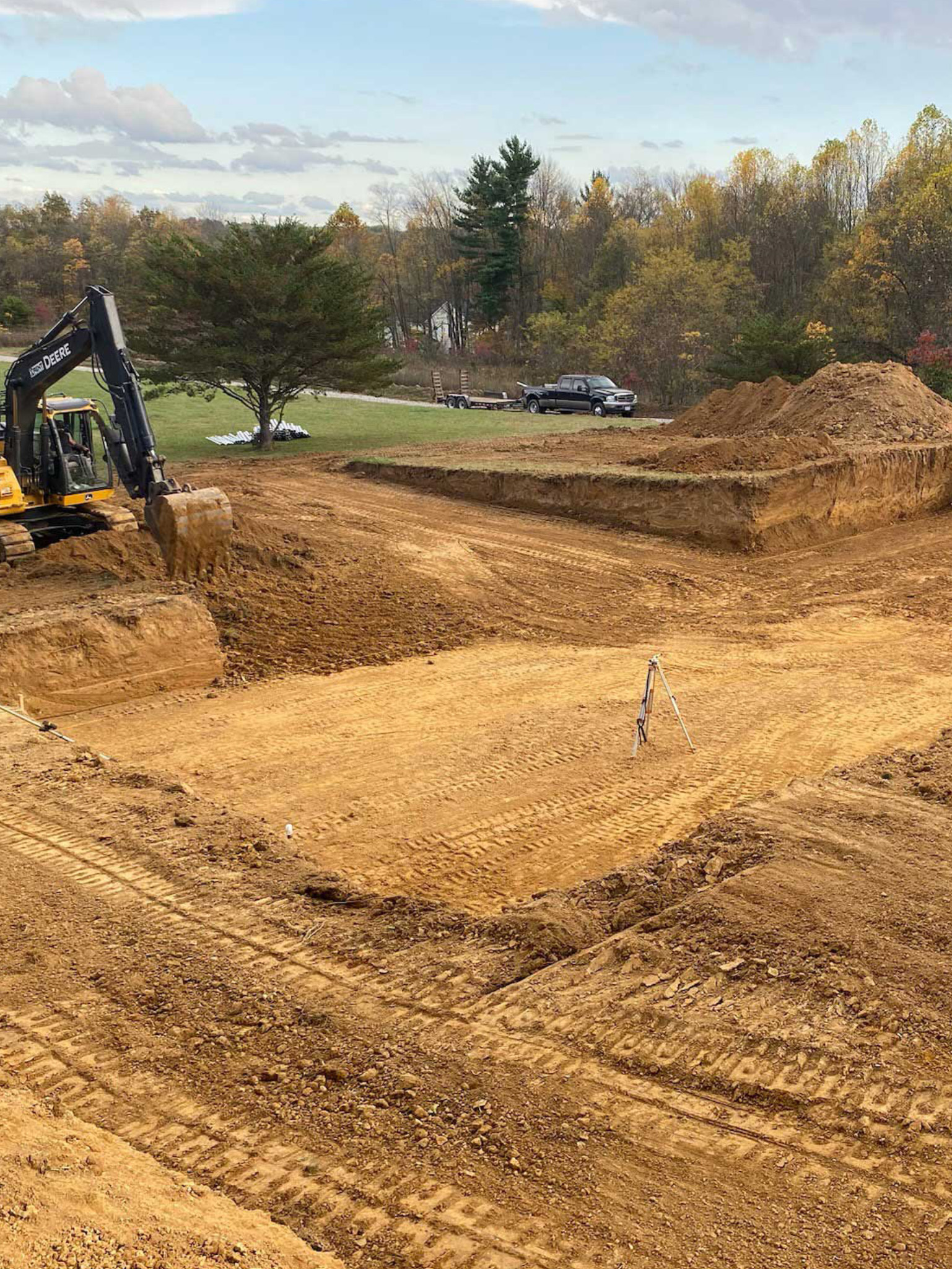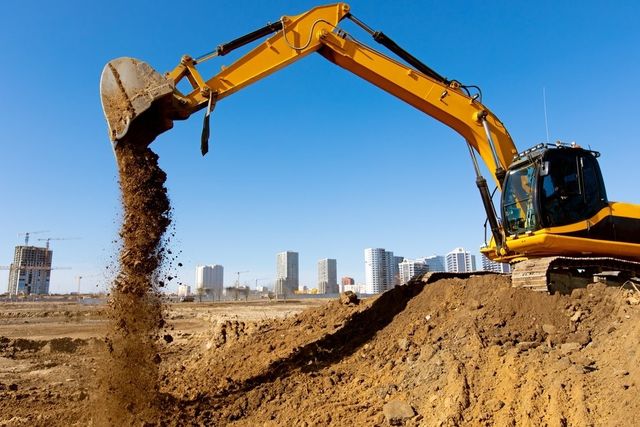Lancaster Trenching - Expert Trenching Solutions in Lancaster, Ohio
Lancaster Trenching - Expert Trenching Solutions in Lancaster, Ohio
Blog Article
Introducing the Art of Excavation: Pro Tips for Safe and Productive Digging
In the world of excavation, the proficiency of risk-free and productive digging is an art form that calls for knowledge, adherence, and precision to recognized techniques. As soil is turned and planet is relocated, the complexities of excavation disclose themselves, requiring a keen understanding of tools, soil composition, safety and security procedures, and ecological factors to consider. The proficiency required to navigate these components efficiently can mean the distinction between a successful excavation project and a possible catastrophe. By deciphering the layers of this detailed process, a globe of understandings and methods awaits those seeking to elevate their excavation skills to brand-new heights.
Importance of Correct Tools
To ensure the safety and effectiveness of any type of excavation job, using the suitable devices is vital. The right devices not just enhance productivity however additionally reduce risks associated with excavating. Excavation jobs differ in range and intricacy, ranging from little household landscape design work to large-scale building undertakings. Regardless of the task dimension, having the right equipment can make a substantial distinction in the end result.
These flexible machines come in numerous dimensions to suit various job needs. Mini excavators are excellent for smaller sized tasks, while bigger excavators take on much more substantial jobs effectively.
Bulldozers succeed in tasks that need pushing big quantities of soil or debris. By investing in the ideal tools, excavation projects can be finished securely, on time, and with precision.
Recognizing Dirt Composition
A detailed grasp of soil structure is basic for performing excavation projects with accuracy and safety and security. Recognizing the different types of dirt is important as it straight influences excavation approaches, tools option, and overall job performance. Dirt structure generally consists of 4 major parts: sand, silt, clay, and organic issue. Each element has one-of-a-kind buildings that influence how soil reacts to excavation procedures.
Sand bits are the biggest and give good drainage however use little communication. Silt particles are smaller sized than sand but larger than clay, offering modest drainage and cohesion. Clay bits are the smallest and supply high communication however poor water drainage. Raw material, such as rotting plant product, affects dirt fertility and security.
Before starting excavation, carrying out dirt tests to identify its structure and attributes is crucial. This details helps in selecting the ideal tools, executing security measures, and creating excavation strategies tailored to the specific soil conditions - dump truck companies in ohio. By recognizing dirt composition, excavation professionals can boost project results while guaranteeing security and adherence to best practices
Precaution and Protocols
Recognizing soil make-up is the foundation upon which security steps and methods for excavation tasks are constructed, guaranteeing the well-being of employees and the success of the endeavor. There are several crucial actions that have to be carried out to mitigate threats and avoid accidents. when it comes to safety and security throughout excavation.
First and leading, prior to any type of excavating begins, a thorough evaluation of the site must be conducted to identify any possible dangers such as underground energies, unsteady soil problems, or close-by structures that can position a danger. It is crucial to have a qualified person manage the excavation procedure to guarantee that all security protocols are followed purely.
Furthermore, all workers entailed in the excavation has to be correctly trained in secure digging practices and the appropriate operation of tools. By adhering to these security steps and procedures, excavation projects can be completed efficiently and without event.
Reliable Excavation Preparation
When getting started on an excavation task, careful planning is essential to make certain effectiveness, security, and effective end results. Effective excavation next planning includes numerous crucial steps that are essential for the smooth execution of the task.
When the site evaluation is total, the next step is to develop a clear timeline and timetable for the excavation tasks. This consists of establishing the series of tasks, devices needs, and workforce allocation. Proper organizing helps prevent hold-ups and ensures that the task stays on track.

Additionally, communication among all employee is extremely important throughout the planning phase. Clear regulations, regular updates, and efficient sychronisation are crucial for a successful excavation task. By investing effort and time in precise preparation, excavation teams can substantially enhance have a peek at this site efficiency, lessen risks, and achieve successful end results.

Managing Ecological Considerations
With boosting focus on environmental sustainability in building and construction techniques, handling ecological factors to consider has come to be a crucial aspect of excavation tasks. Excavation activities have the prospective to impact the surrounding setting with soil disintegration, sediment overflow, environment disturbance, and contamination of water resources. To alleviate these dangers, it is vital to apply ideal practices that focus on environmental management.

Furthermore, proper waste monitoring is important to stop dirt and water contamination. Implementing procedures for the disposal of unsafe products, recycling of waste materials, and reducing making use of unsafe chemicals can significantly reduce the ecological effect of excavation tasks. By incorporating these methods into excavation planning and implementation, building companies can ensure that their projects are not just risk-free and efficient yet additionally eco liable.
Final Thought
To conclude, mastering the art of excavation calls for a complete understanding of correct devices, soil structure, security steps, and effective planning. By complying with these guidelines and taking into consideration environmental aspects, excavations can be performed securely and efficiently. It is critical to focus on safety and security original site and performance in every digging job to guarantee effective outcomes.
As dirt is turned and earth is moved, the details of excavation disclose themselves, demanding a keen understanding of devices, soil make-up, security protocols, and environmental considerations.To make sure the security and efficiency of any excavation task, using the ideal devices is paramount.A comprehensive understanding of soil composition is fundamental for implementing excavation tasks with accuracy and safety and security. Comprehending the different types of dirt is vital as it straight affects excavation techniques, tools option, and total project efficiency. By comprehending soil structure, excavation professionals can boost project results while making certain security and adherence to ideal practices.
Report this page